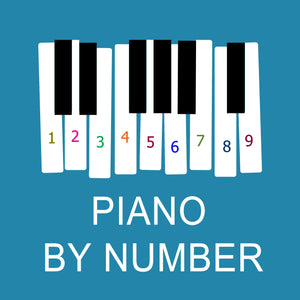Let The Child Lead The Piano Lesson

Piano teachers need to let the child appear to lead the piano lesson. This is better than presenting them with an unbending lecture and drill. Both have their place. So much of k-12 education is force fed these days. It is a pleasant surprise to ask a child, "What shall we do today?" even if you have a secret teacher's agenda in mind.
I find that almost all kids can make music at the piano if you make it simple enough. I'm referring to improvised music which has a rhythmic basis. In this situation, a child can join and be part of the musical fabric. This is the essence of music making, even at its highest levels, and children relish it just like adults.
Simple songs like Chopsticks are the proof of this, and Heart and Soul as well. These are songs you'll find that 90% of children have heard or played on the piano.
The Lowly "Chopsticks"
The essence of Chopsticks is a simple tune that is enjoyable to play, and not very hard to do either. Like a toy, children get happily lost within the song, and repeat it until they are bored with it.
Most piano teachers disdain such songs as "beneath" them. But you should watch the child's enthusiastic reaction to it. My point is that a clever piano teacher will see the following skills being taught by playing Chopsticks:
Rhythm: you can't play Chopsticks unless you play evenly
Fingering: even two index fingers involve many important muscles and reactions
Musical Form: the song repeats from the beginning very neatly, like a circle that keeps rolling around
Ensemble: there are two parts to Chopsticks, and you'll have to cooperate with the others in the band
Counting: Chopsticks has three beats, and you'll be nodding your head in that fashion, 1 2 3, 1 2 3.
Black Keys: the first two notes of Chopsticks are on either side of the lowest of the group of three black keys. To start the song, you'll have to be able to find it.
No Agenda, Just Observation
Thus I don't necessarily have an agenda unfurled every lesson. The child's abilities and deficiencies are obvious, and one could start anywhere in an effort to expand their musical education. The one unchangeable item on the piano teaching agenda is that the child progress. And the student must progress without a loss in enthusiasm.
Maintaining Enthusiasm
How enthusiasm is accomplished varies with the day, and the mood. Like a ship in the wind, you will get nowhere if you push in the wrong direction. And, like a ship in the wind, if you learn to really gauge the child's mood (the wind) you will sail as far and fast as you like.
I can't tell you the number of times that a subject, properly introduced, is first rejected by the child only to be accepted later as "interesting." When a child rejects something because it seems too difficult, they are telling you that they have not been properly prepared. They don't know it, but this is what their rejection indicates.
For example, many children reject fingering outright as "absurdly complicated," only to embrace it utterly after you have made their fingers into a game, both on and off the piano. The lesson is to pay more attention to the child's reaction than to your own. Your method is irrelevant, and only the child's understanding of it matters
REFERENCES
Child’s Point of View
Don't Tell Kids How Hard the Piano Is
Number Sheets For The Piano
The Pillow and the Piano
What The Piano Means To Your Child
A Child’s Point of View
Finding A Child’s Piano Comfort Zone
Why Kids Need Freedom To Learn Piano
A Bill of Rights for Kid’s Piano
How Kids See The Piano
Inside A Kid’s Head During A Piano Lesson
Kids Don’t Care What’s In The Piano Book
What Bores Children In Piano Lessons?
What Kids Like About Piano Lessons
The Teacher Is More Important Than The Book
Strict Piano Lessons Don’t Work For Kids
The Piano Is A Child’s Thinking Machine
How A Child Sees The Piano Keyboard
Kids Like Holiday Songs On The Piano
I Want To Learn That Song That Goes…
Follow The Child’s Pace With Piano Lessons
Discipline and Repetition Don’t Work in Kid’s Piano
Every Child Learns Piano Differently
Funny Piano Lessons
Engage Kids With The Piano
How A Child Sees The Piano
What Kids Think In A Piano Lesson
What Is Soft Piano?
Freestyle Kid’s Piano
What Kids Need In Piano Lessons
Piano By The Numbers
Piano With Numbers Keys
PIANO BY NUMBER
We've turned notes into numbers for happy beginners at the piano!

PLAY FUN PIANO GAMES!
Turn that big piano into a toy! Play fun piano games with your child today! We help take the confusion out of beginning music theory.

GET A DOWNLOAD!
International orders are welcome on ebooks! If requested we will send free pre-printed stickers worldwide! No shipping charges on downloads!

eBOOKS INCLUDE STICKERS!
eBooks include a sticker template. You can use the sticker template and/or request FREE pre-printed stickers sent via surface mail.
